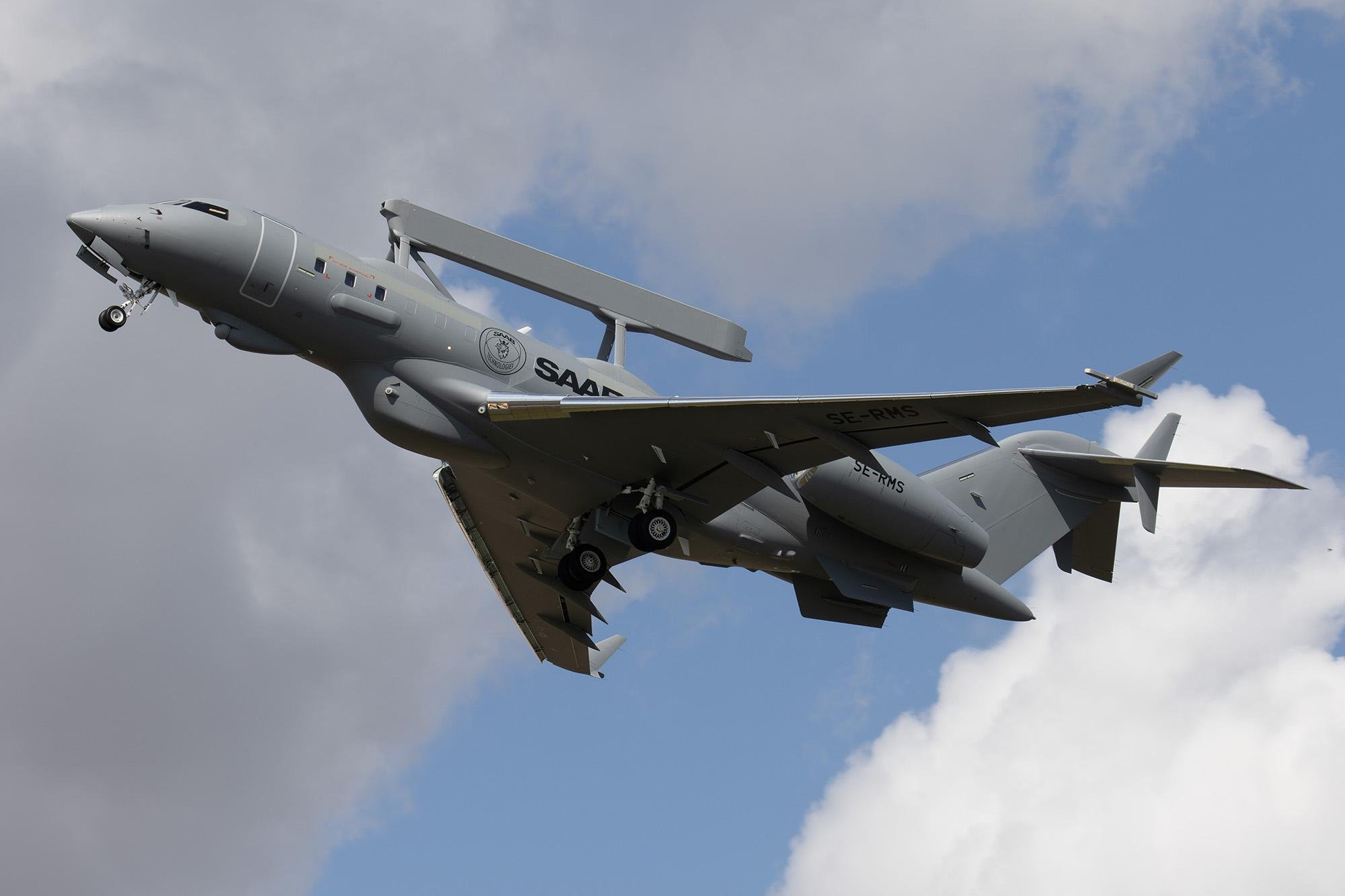
DUBAI—Saab is getting ready to fly the United Arab Emirates’ (UAE) fifth GlobalEye swing-role surveillance platform as the company sees an uptick in international interest in the business-jet-based airborne early warning aircraft (AEW).
As the platform’s launch customer, Abu Dhabi has a total of five GlobalEye aircraft on order, two of which came from a top-up order placed in December 2020.
Three have already been delivered, while a fourth aircraft—equipped with an updated electronic surveillance measures (ESM) suite—flew in April. A fifth aircraft is due to fly in the coming weeks. Both are due to be delivered to the UAE customer in 2024.
The GlobalEye brings together an AEW and surface-surveillance capability into a single platform. Saab’s Erieye ER radar is fitted into a ski-box-like fairing on top of the fuselage. Leonardo’s Seaspray 7500E active electronically scanned array surface-search radar for land and sea surveillance is fitted into a fairing in front of the wing box. Under the forward fuselage is an electro-optical camera system, allowing for long-range visual identification of targets that can also be mounted.
With the GlobalEye’s development, Saab has reemerged as a player in the international AEW market, following the success of earlier Erieye-equipped Saab 340s, 2000s and Embraer 145 regional airliners.
The company recently sold two Erieye radar-equipped Saab 340s to Poland so Warsaw could meet an urgent AEW requirement. These aircraft had previously been operated by the UAE but were given back to the manufacturer after delivery of the GlobalEyes.
The GlobalEye backlog has been bolstered by the domestic sale of two aircraft for the Swedish Air Force, due for delivery in 2027.
Sweden also has options for an additional two aircraft, and Saab is exploring whether these could be potentially procured through an arrangement with neighboring air forces in Denmark, Finland and Norway.
The OEM is actively marketing the platform to NATO countries as a potential replacement for the alliance’s Boeing E-3A Sentry as well as to South Korea, which is seeking additional AEW platforms to bolster its existing fleet of Boeing E-7 Peace Eye aircraft.
“There is confidence about securing more sales,” says Tomas Lundin, head of sales and marketing for Saab’s Airborne Early Warning and Control platforms.
“We are confident because the GlobalEye exists, it is in operation, it is the latest technology available and it is under contract, and we are building and flying it—it is not something on a Powerpoint slide,” Lundin adds.
The GlobalEyes for the UAE and Sweden are based on the Bombardier Global 6000 platform, but all export aircraft that follow will be based on the Rolls-Royce Pearl-powered Global 6500, Lundin says.
“Moving to the [Global] 6500 platform is a small change ... new engines that give a little bit more endurance and there’s some small changes in the avionics… but we will do that for the future export countries now,” he says.
For South Korea, Saab has modified its WatchEye proposal with under-fuselage and rear-fuselage mounted radars to supplement the fuselage-mounted Erieye ER radar and enable 360-deg. radar coverage. Lundin hopes that will enable the GlobalEye to be fully compliant with Seoul’s E-X Phase 2 program requirements, although Seoul has not yet published the request for proposals for the requirement.
As well as providing a compliant bid, Lundin says, Saab would provide Seoul what he calls a “strong industrial cooperation package.”
Lundin also reveals that Saab briefed French defense officials about the GlobalEye during the Paris Air Show and that a French delegation had subsequently flown on the GlobalEye aircraft in Sweden. The briefings emerge as France considers what to do with its four Boeing E-3F Sentry AEW platforms now that other E-3 operators are moving to replace the 707-based airframe. The U.S. Air Force and the UK Royal Air Force have already opted to purchase Boeing’s E-7 based on Australia’s Wedgetail configuration.
Saab has also responded to a NATO request for information at the end of last year as the alliance considers whether to retain its own fleet of E-3 Sentry aircraft out to 2035. Other manufacturers including Boeing, Northrop Grumman and L3Harris also responded to the NATO call.





